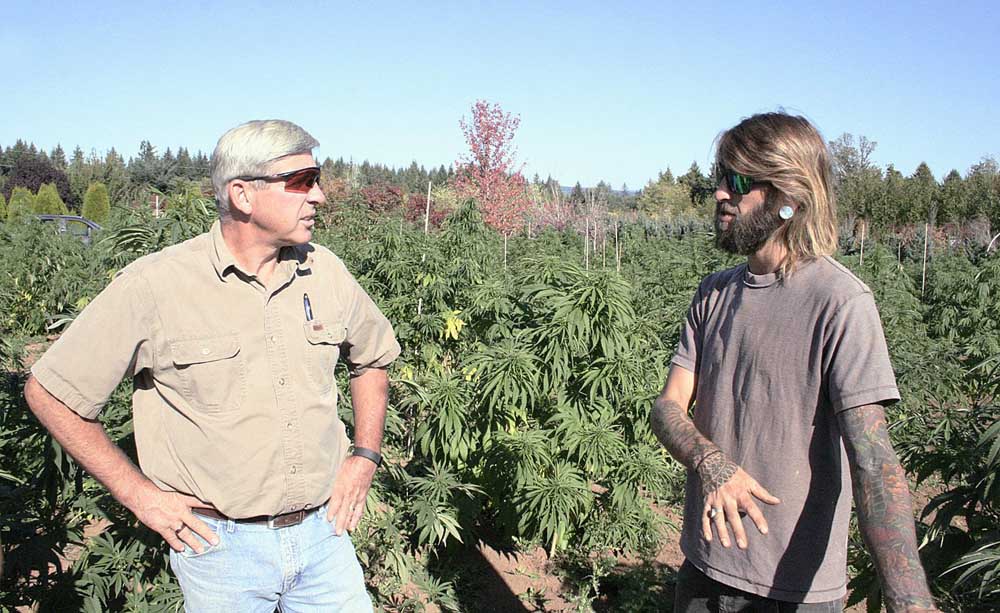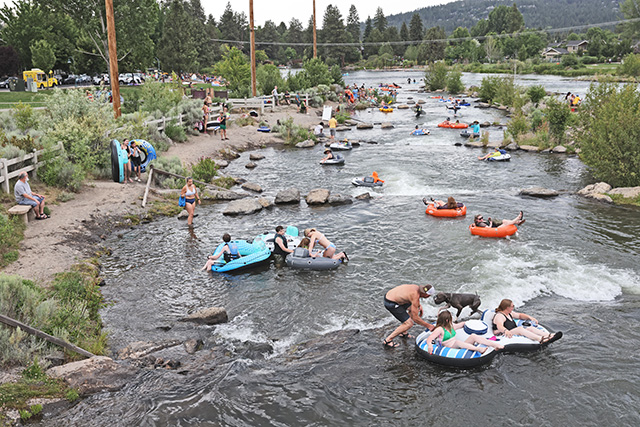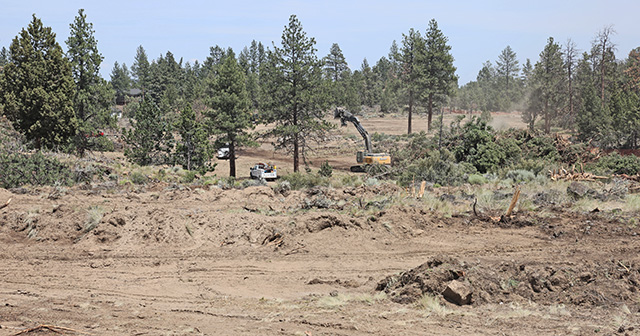Tumult in hemp industry reflected in USDA statistics
Published 4:30 pm Friday, April 26, 2024

- Barry Cook, left, speaks with his son, Bo, in a field of hemp growing at his nursery in Boring. Cook has since stopped producing the crop to rededicate his operation to growing nursery stock, dissuaded by shrinking markets and stricter regulation.
Hemp acreage held steady last year after previously falling steeply in the U.S., though the crop’s economic and regulatory outlook remains tumultuous, experts say.
At about 27,700 acres, nationwide hemp plantings in 2023 declined only 2% from 2022, though they’re down nearly 50% compared to 2021, according to USDA’s latest report on the crop.
Opinions within the hemp industry are divided about its future prospects, given the turmoil it’s endured since the crop was legalized at the federal level in the 2018 Farm Bill.
Beau Whitney, an economist specializing in the cannabis industry, said he’s generally optimistic despite the threat government overregulation poses to hemp production.
“It’s gone from boom to bust, but it’s not going to be bust for very long,” Whitney said.
According to USDA, the crop’s planted acreage topped 54,000 acres in 2021, but Whitney estimated that nationwide production reached 500,000 acres before the agency began tracking the crop.
“The hemp industry has collapsed in the same way it grew, which is exponentially,” said Seth Crawford, a hemp seed producer near the mid-Willamette Valley college town of Monmouth.
Within the overall acreage decrease, farmers have most drastically shifted away from cultivating the crop’s controversial flowers.
Hemp harvested for flower has dropped from 16,000 acres to 7,400 acres during the past two years, while harvested grain has decreased from 8,250 acres to 4,000 acres and harvested fiber has gone from 12,700 acres to 12,100 acres, according to USDA.
Smaller amounts of hemp are also grown for seeds, clones and transplants, while not all planted acreage of the crop is harvested each year.
Despite the headwinds facing the flower market, Whitney, the economist, said hemp fiber and grain production will likely prove resilient as demand expands.
“There’s a lot to be optimistic about even though the numbers are so desperately low right now,” he said.
Hemp flower is associated with cannabidiol, or CBD, one of the “cannabinoid” compounds in the plant marketed as reducing inflammation and conferring other health benefits.
Another cannabinoid, THC, is responsible for the mind-altering properties of marijuana, a related crop, but is also found in low levels in hemp. Psychoactive THC extracts from hemp have resulted in stricter government oversight of the crop in such states as Oregon, as have worries about marijuana operations passing themselves off as hemp plantations.
“There’s a lot of farmers who don’t want to deal with the state Department of Agriculture anymore,” Crawford said.
Meanwhile, CBD and other cannabinoids that don’t produce mind-bending effects are still caught in a regulatory limbo at the national level that’s constrained their market potential.
Oregon, an early leader in hemp production, and other states have increasingly treated its flower similarly to marijuana, which remains federally prohibited but has been legalized by many states, he said.
While hemp grain and fiber aren’t directly regulated under cannabinoid restrictions, uncertain and fluctuating rules make investors and banks leery of dealing with the crop generally, Whitney said.
“It can change overnight so they’re not going to invest,” he said.
In Oregon, strong hemp flower prices spurred an upswing in production five years ago, but bottlenecks in processing contributed to crop surplus proved financially painful for many farmers.
From its peak of 64,000 acres in 2019, hemp production in Oregon plunged 96% to 2,400 acres last year, according to the state’s Department of Agriculture. So far in 2024, growers have applied for licenses to grow less than 500 acres of the crop. Stricter laws have been imposed on hemp, which in Whitney’s view has deepened the crop’s reversal of fortune in the state. “Oregon has lost its leadership position in cannabis policy,” he said.







